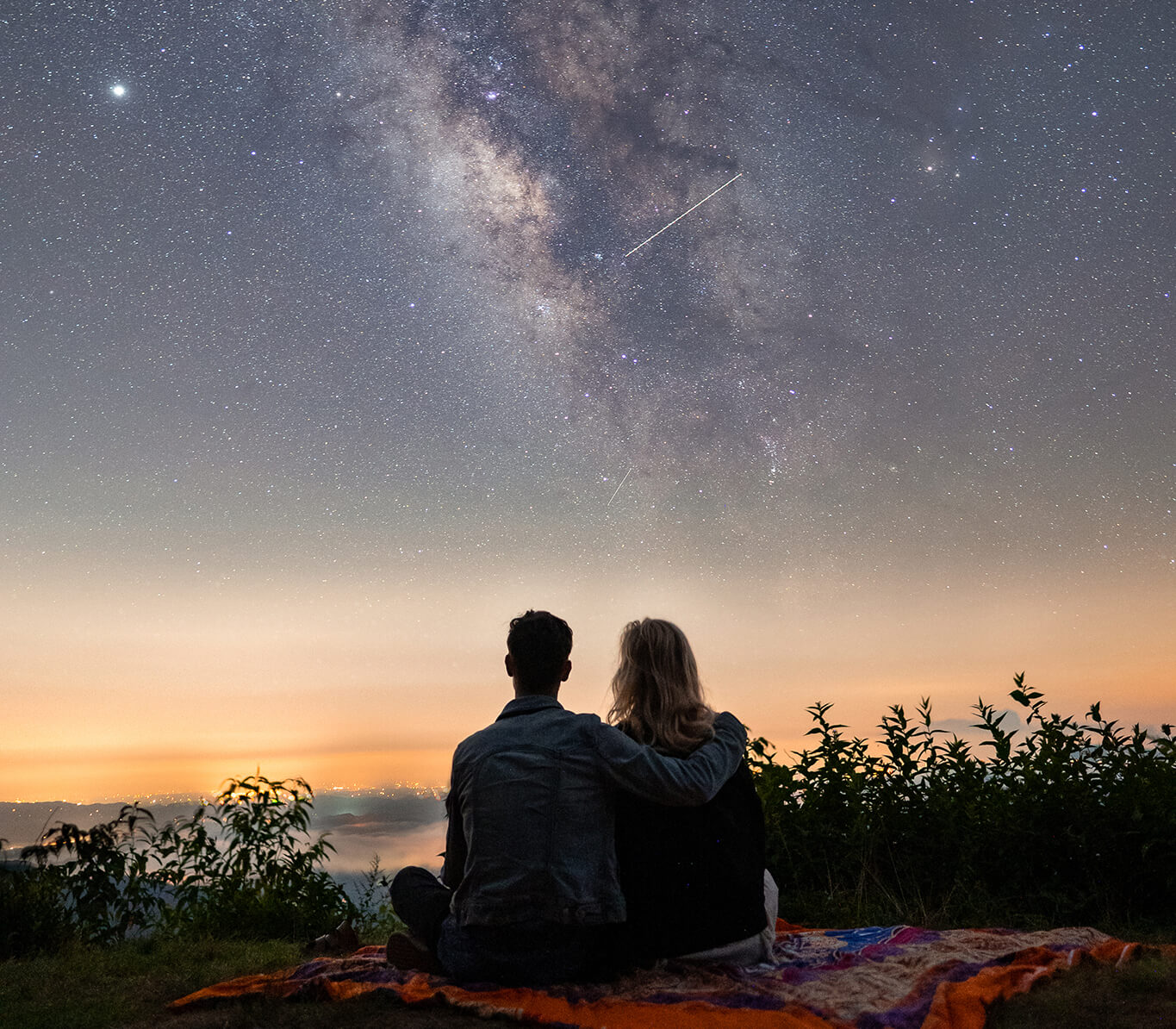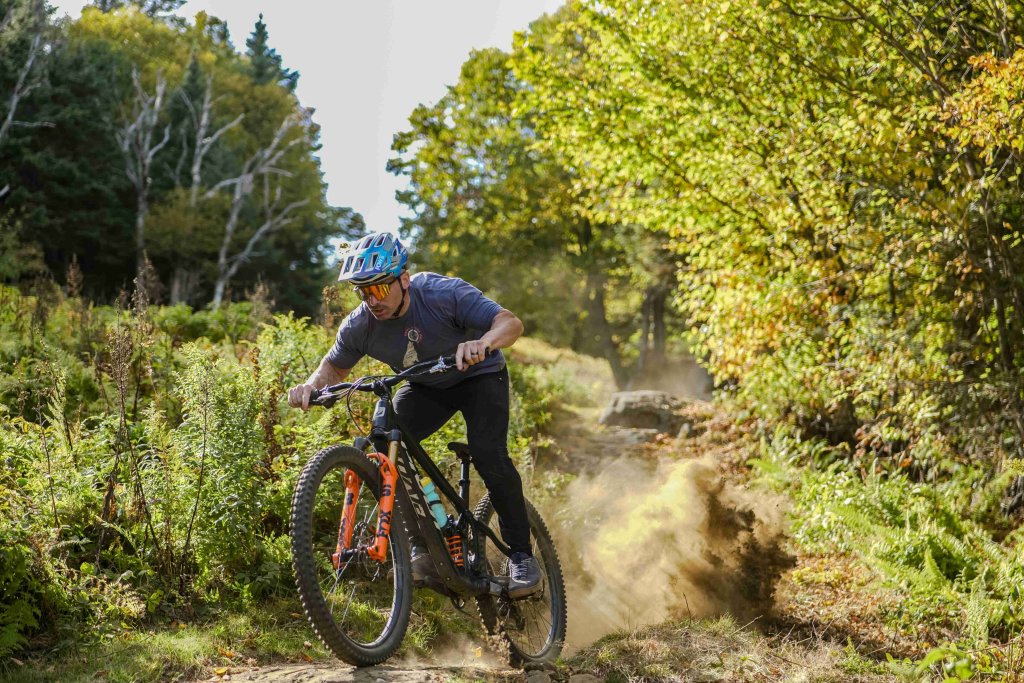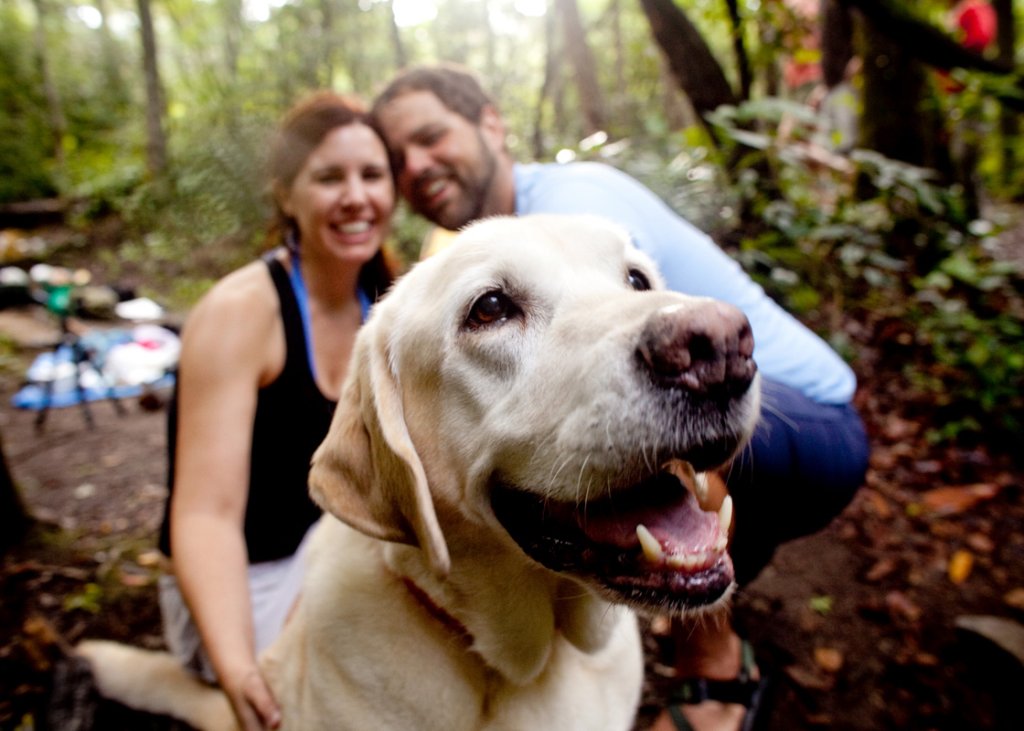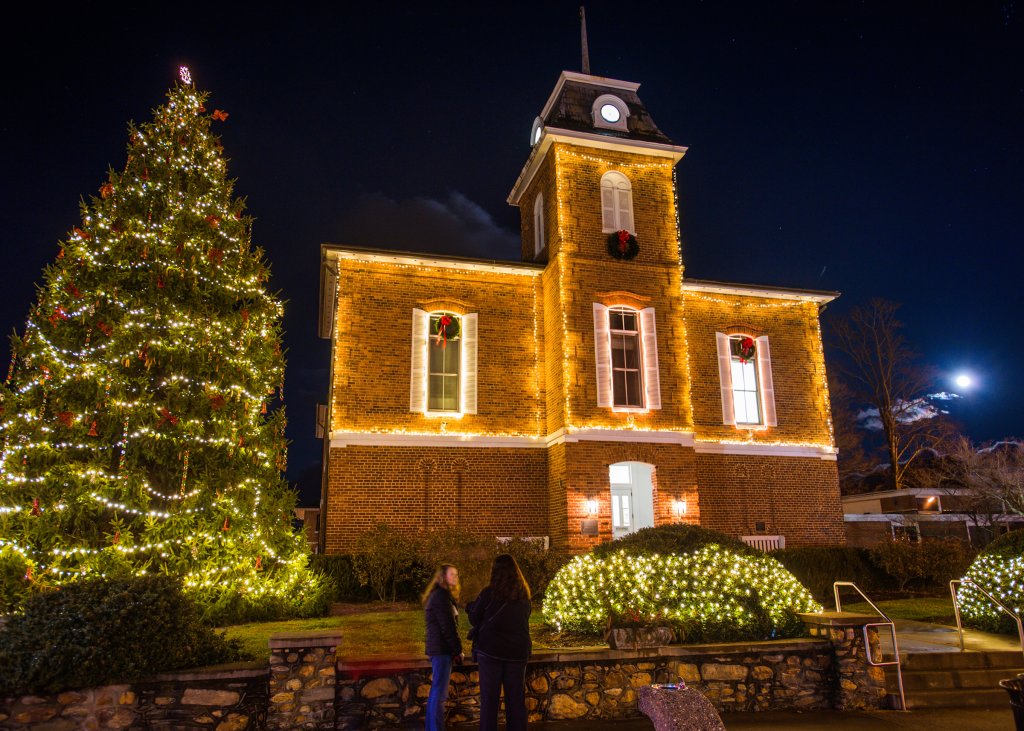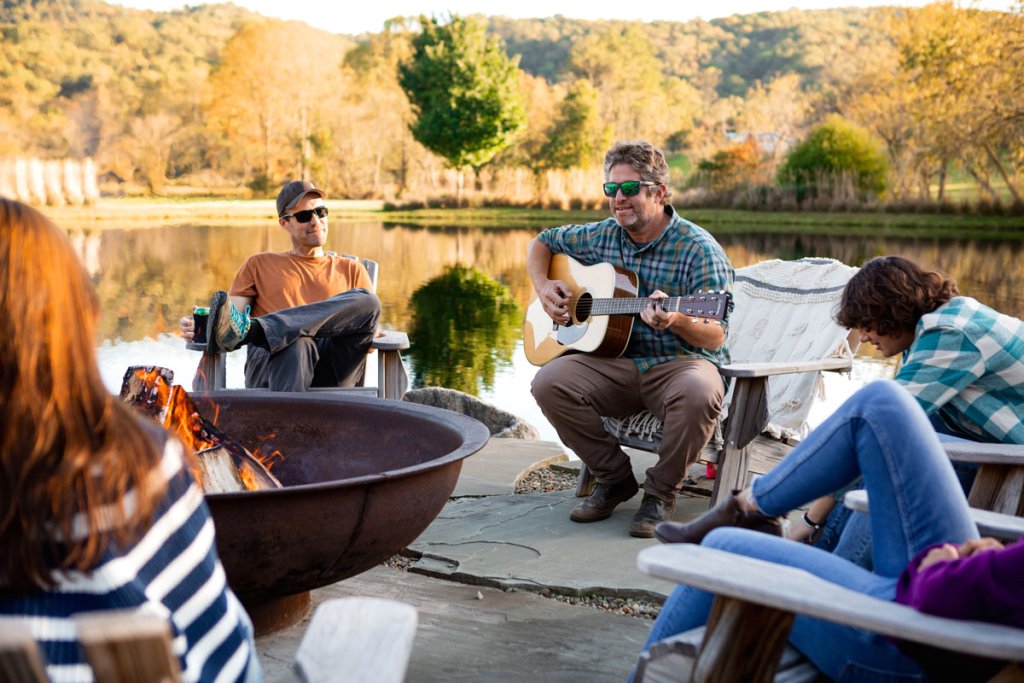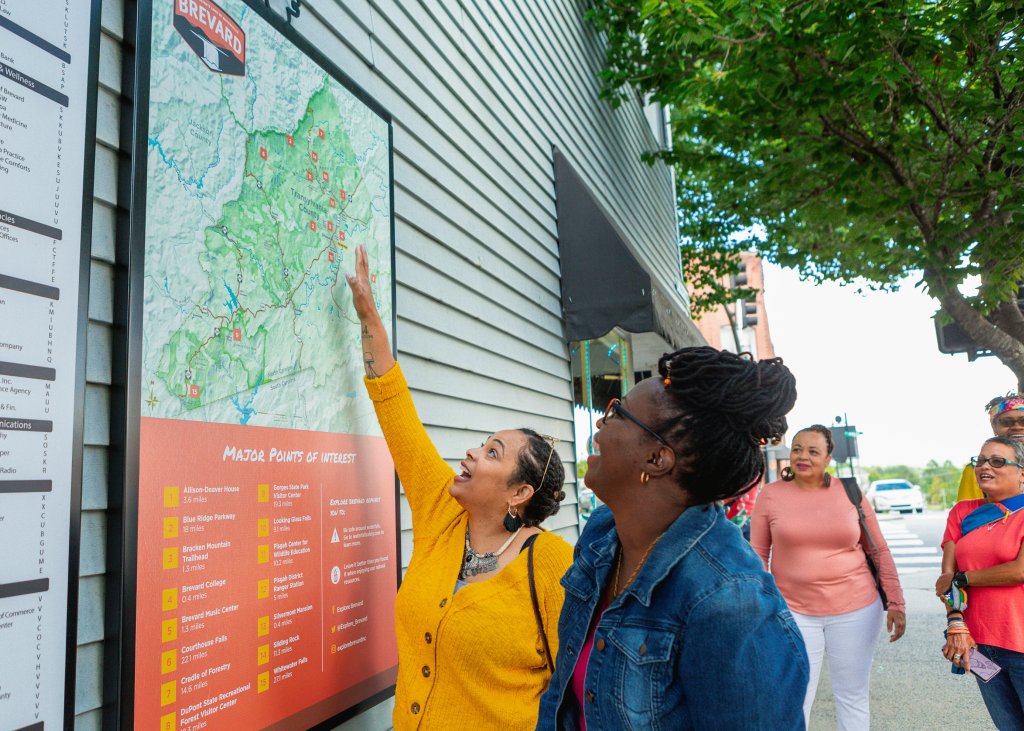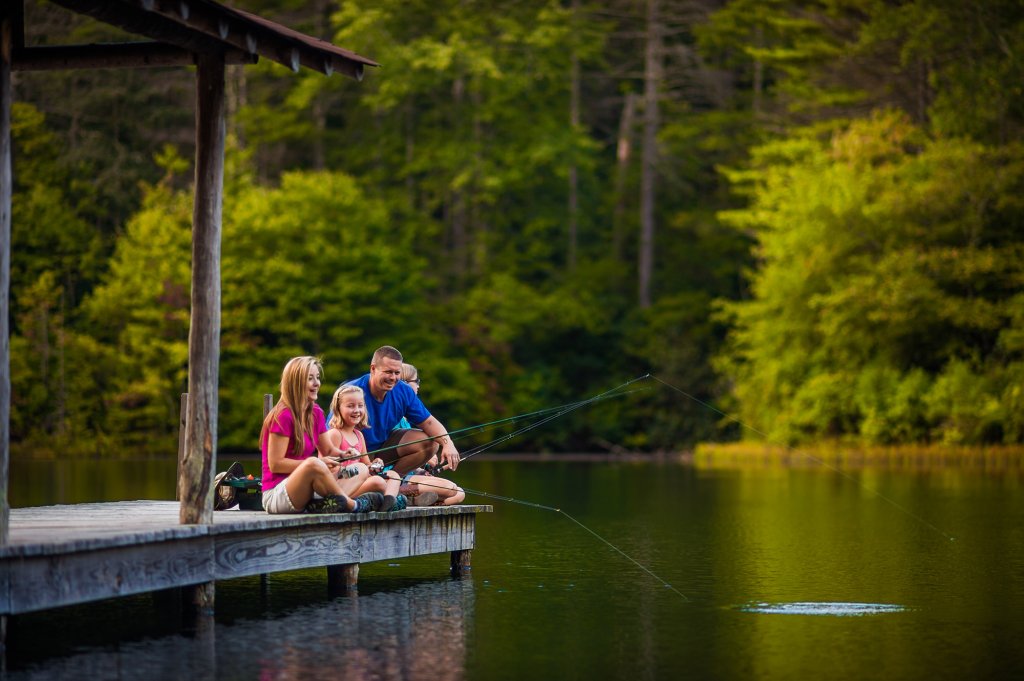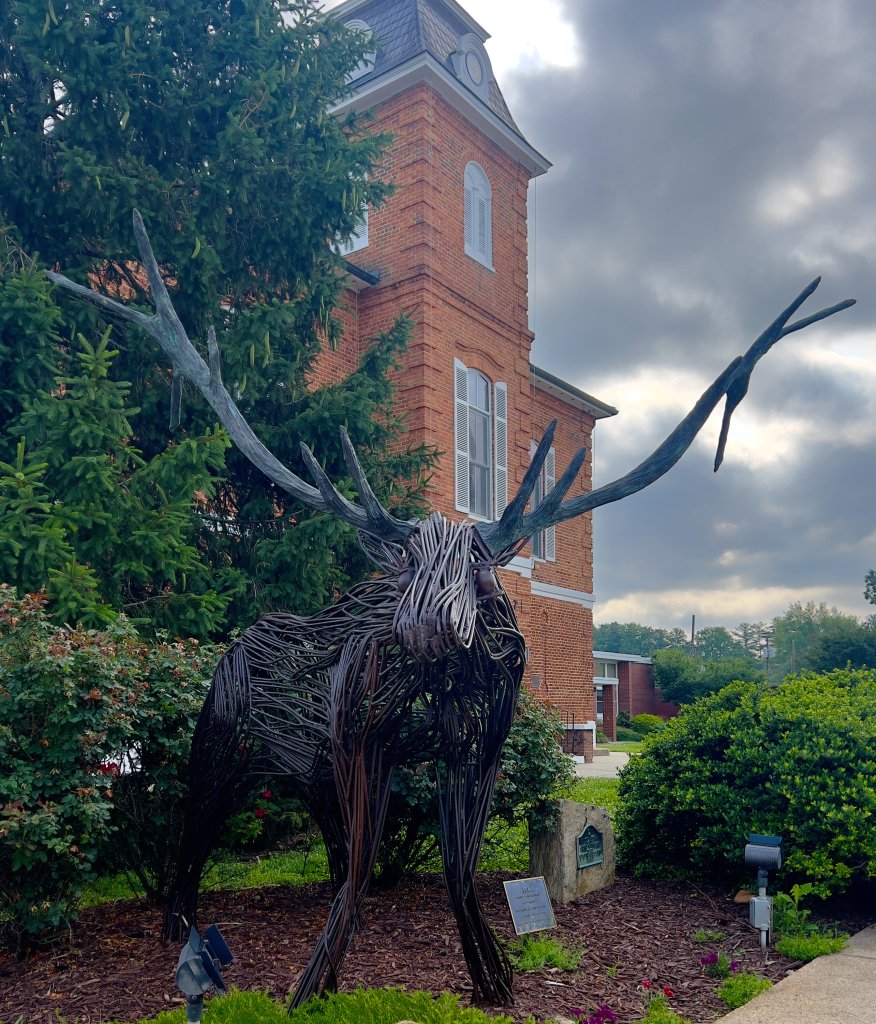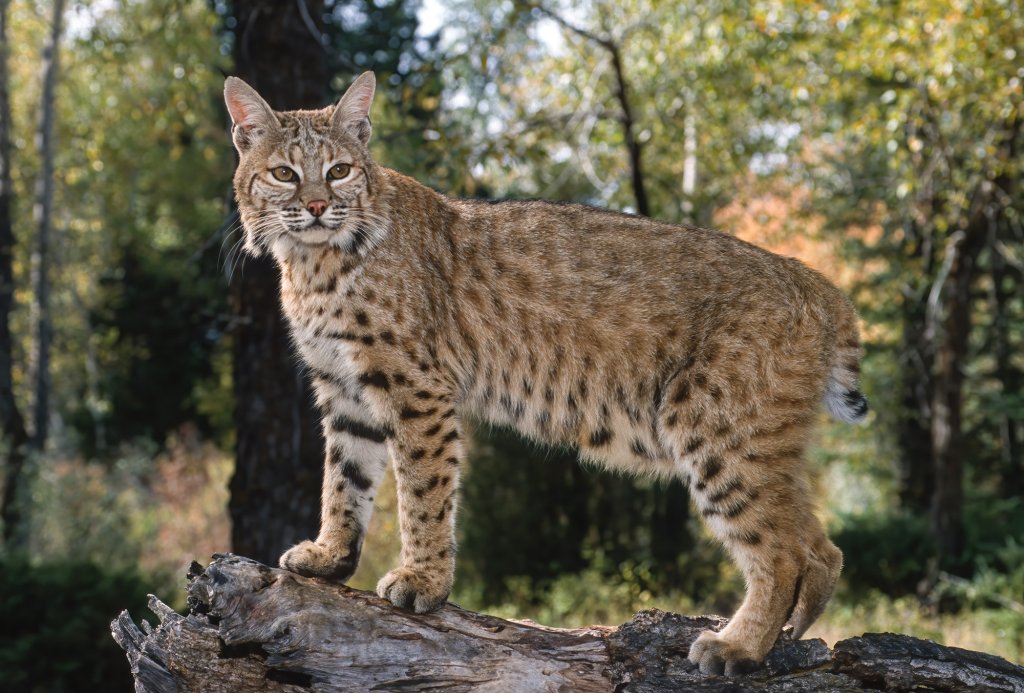A Starry Night Sky is a Beautiful Thing to See
That’s especially true in Brevard, NC. Transylvania County is home to a designated Dark Sky place. We have minimal light pollution, making our mountains an incredible destination to view the night sky. Casual stargazers and serious astrophotographers alike can gaze at the cosmos in its full glory. For a truly celestial experience, we’ve got some tips on the best spots to go stargazing in Transylvania County, how to prepare, and some astrophotography tips from our friends at WNC Photo Tours.
Best Stargazing Spots in Transylvania County
Truth be told, there are no bad spots to view the night sky in Transylvania County. However, there are a few places we recommend checking out for distinctly breathtaking views.
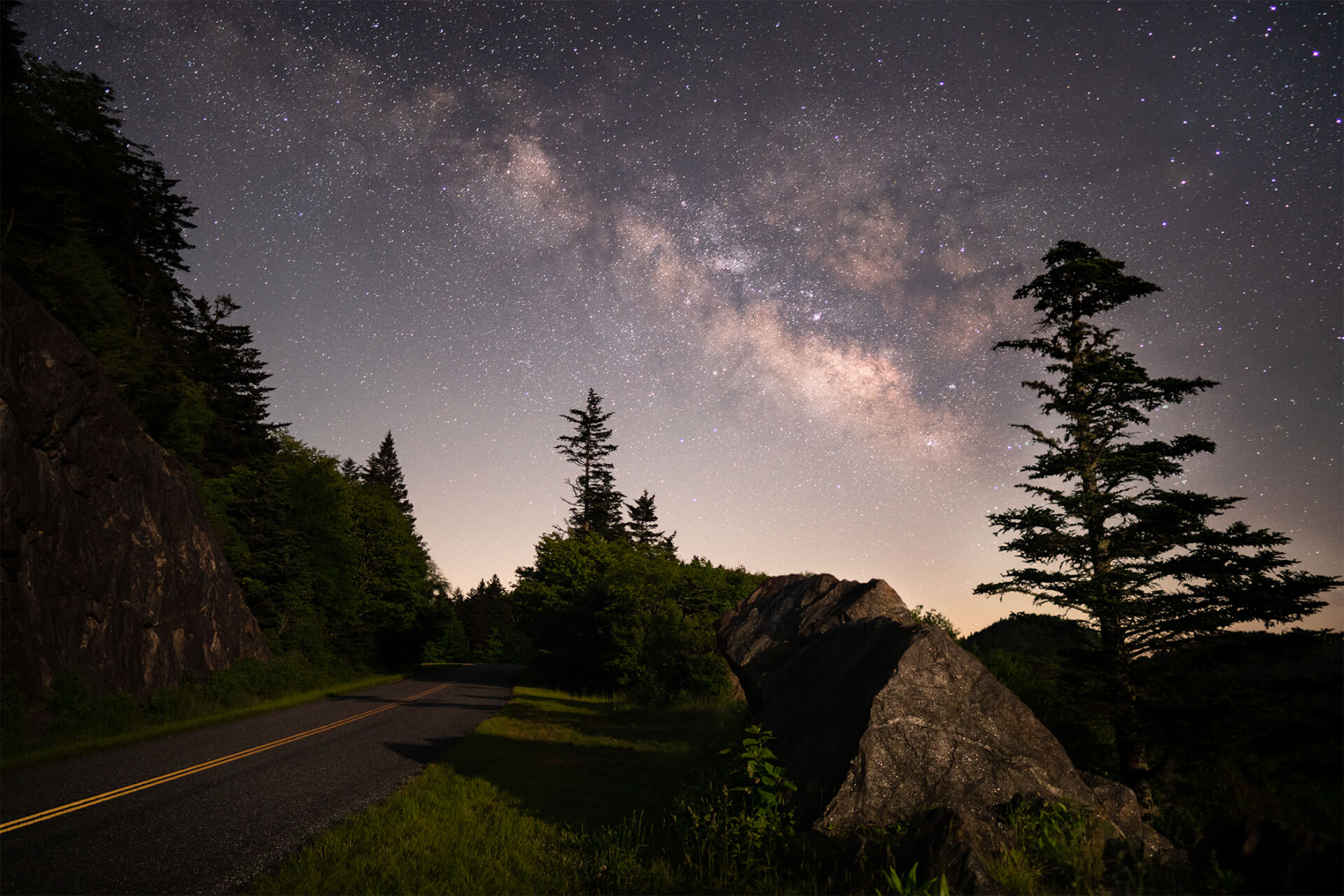
Photo by J. Smilanic at WNC Photo Tours
The Blue Ridge Parkway
16 miles of America’s Favorite Drive wind through the northern border of Transylvania County. There are a multitude of viewing spots for starry-eyed explorers.
- Pounding Mill Overlook (Milepost 413.2) – Make a stop here to get some high elevation and stunning horizon views.
- Cherry Cove Overlook (Milepost 415.7) – A quieter spot on the Parkway, this is a scenic spot with excellent dark skies.
- Devil’s Courthouse (Milepost 422.4) – A short hike at this well-known overlook leads to a prime stargazing perch. Please note, this section of the Parkway is closed currently but will reopen in the summer of 2025.
- Looking Glass Rock Overlook (Milepost 417) – This quick pull-off on the Parkway has dramatic Blue Ridge Mountain views and minimal light pollution.
J Smilanic of WNC Photo Tours agrees—the Parkway is unbeatable for stargazing. “Luckily, Brevard is surrounded by stellar spots for jaw-dropping night sky views. The Blue Ridge Parkway is the hotspot for stargazing in Western North Carolina. Any stretch south of Highway 276 keeps the glow (of light pollution) at bay, but the section near Highway 215 is where to find the best opportunities!”
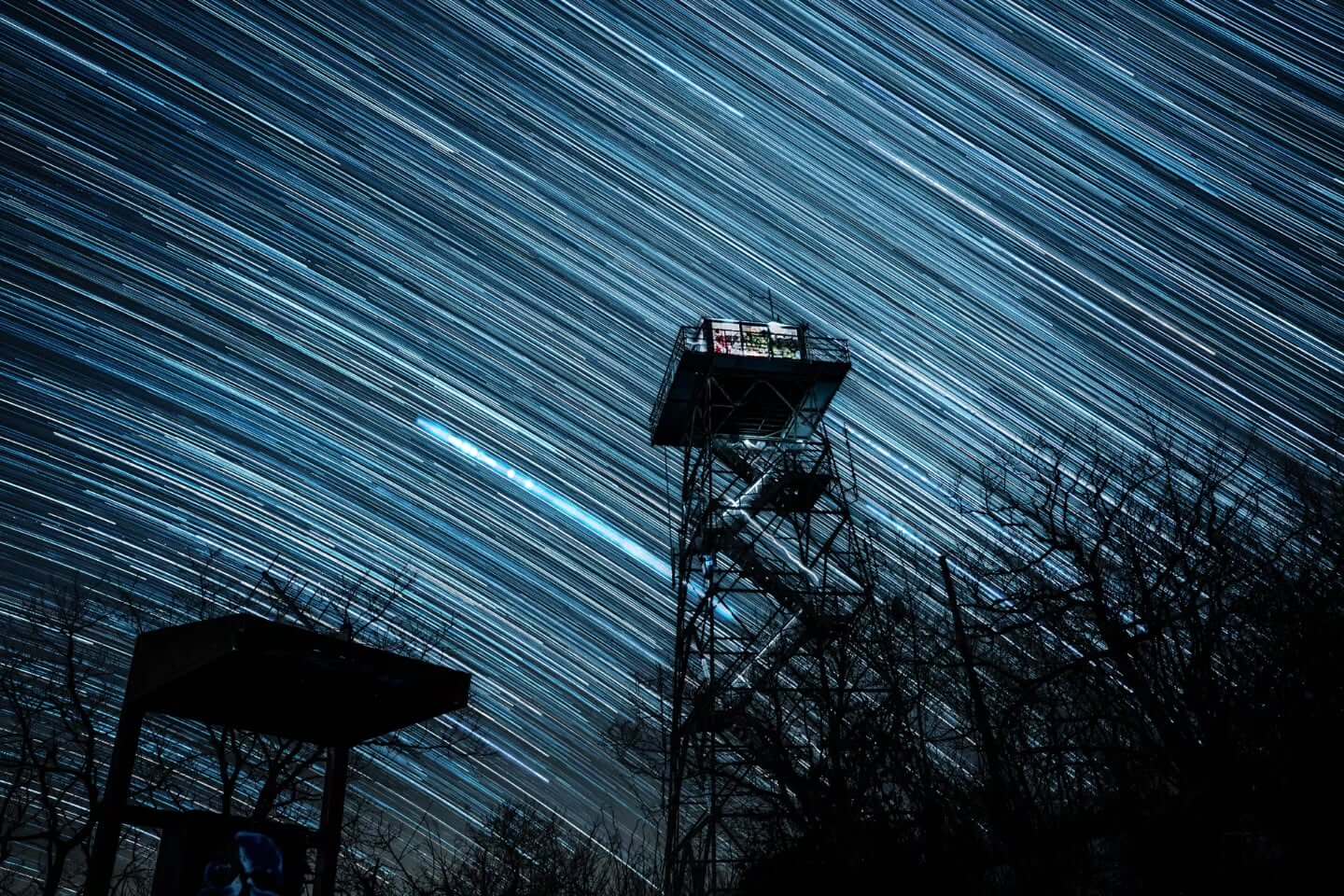
Photo by @machimoments
Fryingpan Lookout Tower
This spot along the Parkway deserves a special mention. Near Milepost 408.5, park at the pull-off for Forest Service Road 450. Take the 1.5-mile hike (out and back) to this decommissioned fire tower with stunning views of Cold Mountain and Shining Rock Wilderness. Treat your eyes to a starry spectacle from the base of the tower.
Use Caution at Night
Trekking through the woods at night poses some distinct challenges. National Park System staff from the Blue Ridge Parkway encourage visitors to use caution on trails like the one to Fryingpan Lookout Tower. You can explore the status of specific trails on the Blue Ridge Parkway website.
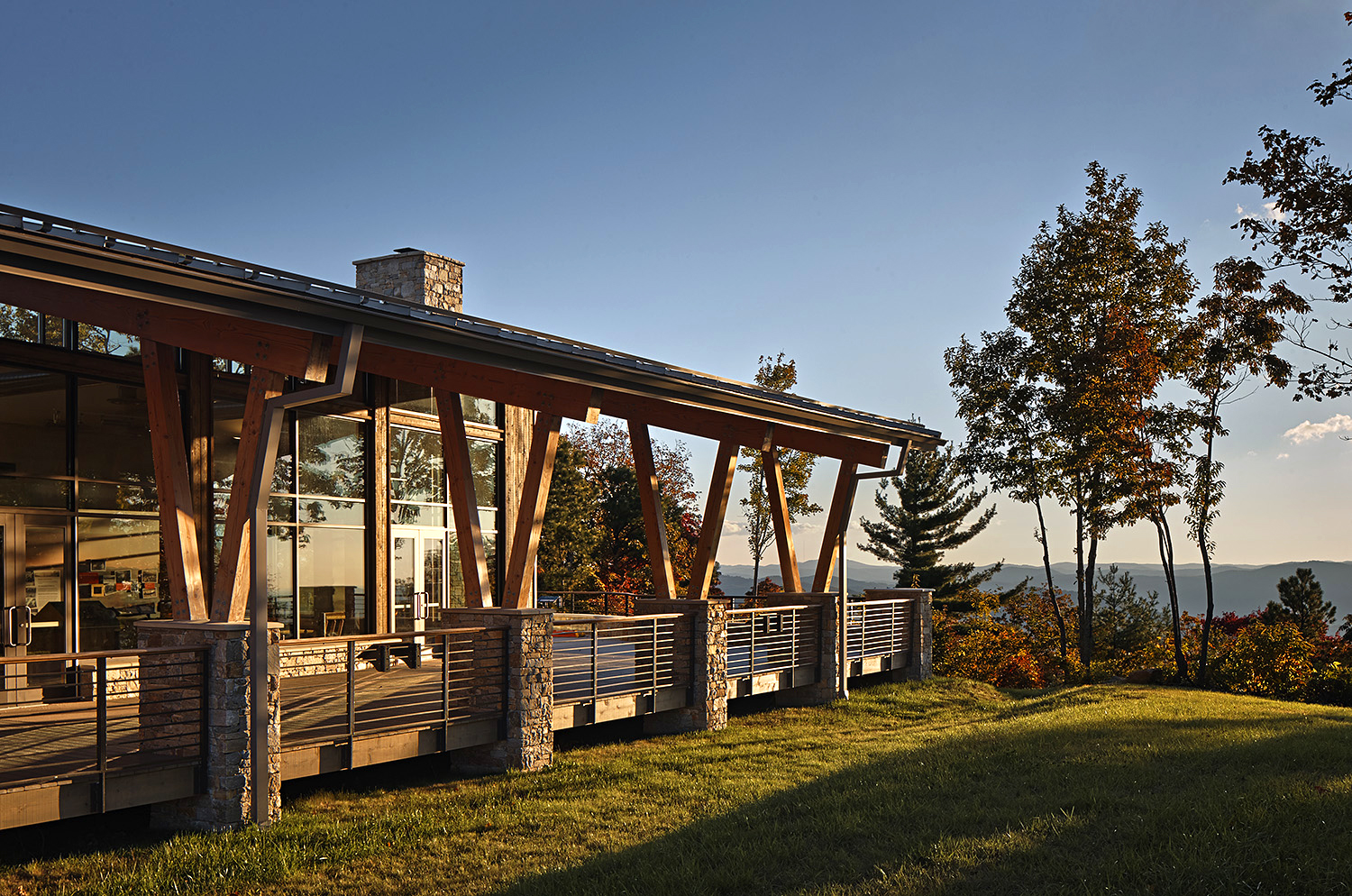
Gorges State Park Visitor Center
Gorges State Park
Gorges State Park sits at the rural, southern end of Transylvania County, tucked away from the reach of light pollution. It’s perfect for a night of stargazing. The park also offers camper cabins and tent sites for backpackers, so there’s a variety of sleeping arrangements to choose from. Reserve your spot to sleep under the stars while getting an incredible view of the cosmos.
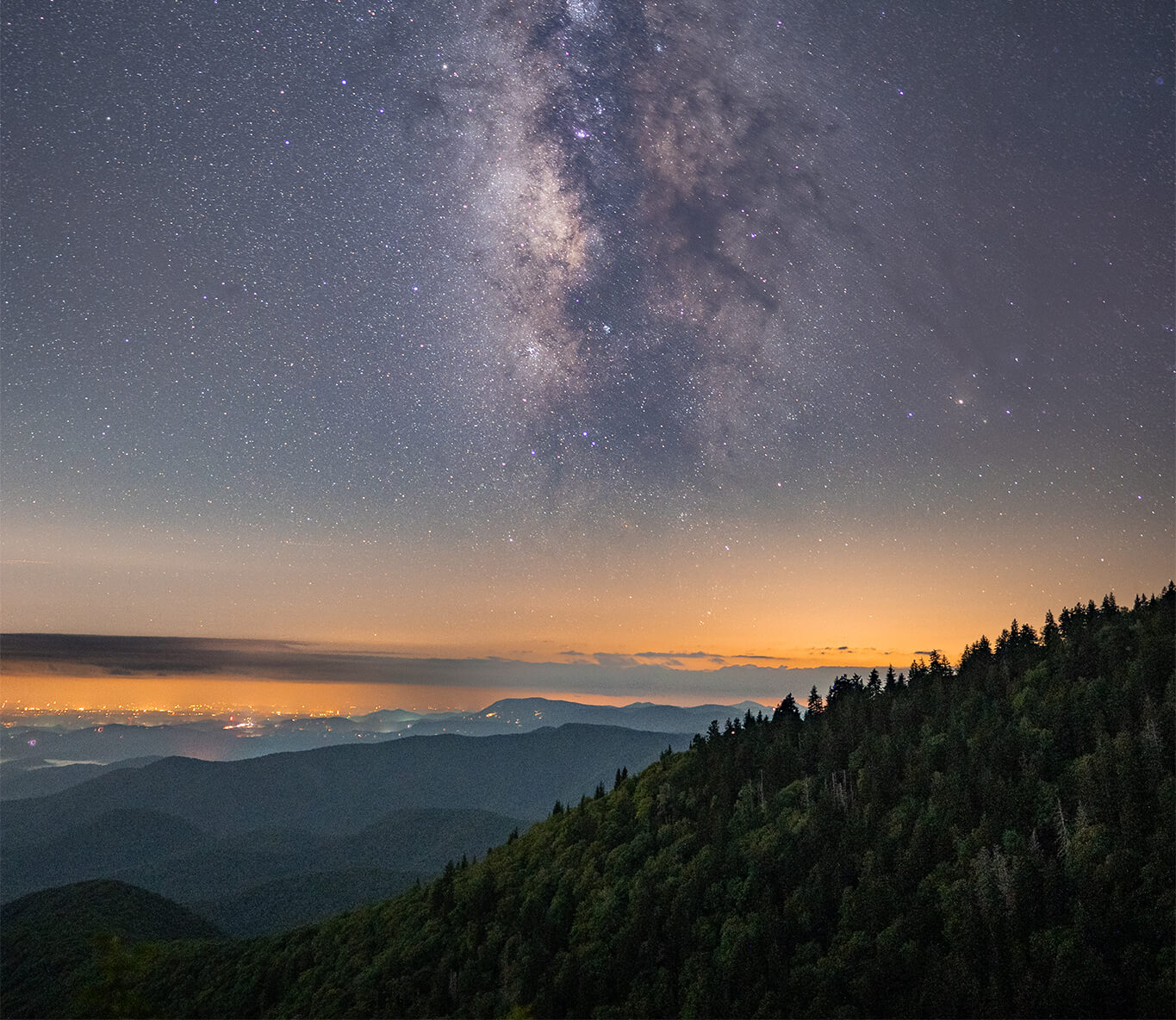
Photo by J. Smilanic at WNC Photo Tours
Pisgah Astronomical Research Institute (PARI)
Remember that designated Dark Sky place that we mentioned earlier? That’s PARI. PARI is a world-class research facility with a rich space history. It was once used by NASA, known as the Rosman Tracking Station. These days, it’s a nonprofit that connects the next generation of space scientists with a number of learning opportunities. They offer public stargazing events, telescope access, and educational programs. And, because they’re a Dark Sky Park, you’re guaranteed to see some of the best celestial views in the southeast.
When to Go Stargazing in Western North Carolina
The best seasons for stargazing are late fall through early spring for crisp, clear skies. It also helps to go during a new moon for even darker skies and optimal viewing.
To see the Milky Way, J at WNC Photo Tours says that timing is key. “In spring, forget about sleeping—it rises at 2 or 3 a.m., depending on the month. By early summer, it graces the southern horizon around 9:30 p.m., climbing earlier as the season extends. The sky hits photo-ready darkness about an hour and a half after sunset. Apps like PhotoPills can pinpoint the Milky Way’s exact spot with their Night AR feature, but on the darkest and clearest of nights, once your eyes adjust, you’ll spot that galactic glow with nothing but your own eyes!”
Some other celestial events worth adding to your calendar include the Perseids in August and the Geminids in December.
What to Bring While Stargazing
The best seasons for stargazing are late fall through early spring for crisp, clear skies. It also helps to go during a new moon for even darker skies and optimal viewing.
To see the Milky Way, J at WNC Photo Tours says that timing is key. “In spring, forget about sleeping—it rises at 2 or 3 a.m., depending on the month. By early summer, it graces the southern horizon around 9:30 p.m., climbing earlier as the season extends. The sky hits photo-ready darkness about an hour and a half after sunset. Apps like PhotoPills can pinpoint the Milky Way’s exact spot with their Night AR feature, but on the darkest and clearest of nights, once your eyes adjust, you’ll spot that galactic glow with nothing but your own eyes!”
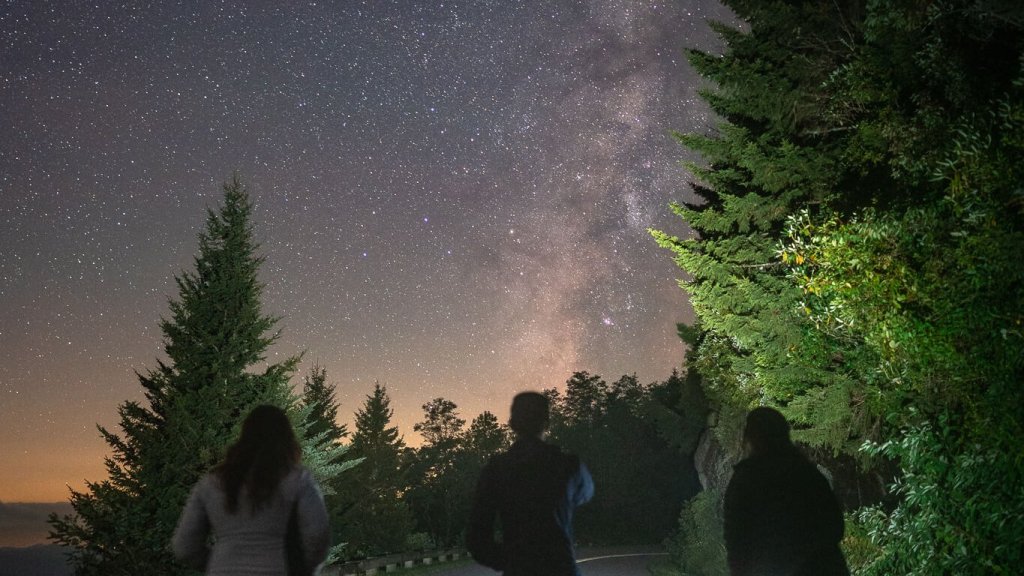
Photo by J. Smilanic at WNC Photo Tours
Astrophotography Tips
Ready to capture the magic? For many adventurists, gazing at the stars is only half the fun. To take that experience to the next level, try your hand at astrophotography. If you’re not sure where to start, don’t worry, J Smilanic also gave us some tips about how to adjust your camera or phone settings for the best photo possible.
To see the Milky Way, J at WNC Photo Tours says that timing is key. “In spring, forget about sleeping—it rises at 2 or 3 a.m., depending on the month. By early summer, it graces the southern horizon around 9:30 p.m., climbing earlier as the season extends. The sky hits photo-ready darkness about an hour and a half after sunset. Apps like PhotoPills can pinpoint the Milky Way’s exact spot with their Night AR feature, but on the darkest and clearest of nights, once your eyes adjust, you’ll spot that galactic glow with nothing but your own eyes!”
Some other celestial events worth adding to your calendar include the Perseids in August and the Geminids in December.
iPhone Users
Even if all you’ve got is an iPhone, you can still get some nice shots of the sky. J says, “Make sure the flash is turned off and aim your camera at the starry expanse. Depending on your model, a yellow “3s” bubble should pop up at the top, signaling that the long exposure is ready to roll. Tap the shutter and freeze—hold steady for 3 seconds! Pro tip for iPhone 11 and newer: tap the down arrow at the top center, hunt for the crescent moon icon, and crank it from 3 to 10 seconds for max starry brilliance. Tripod users, rejoice—your shutter can stretch to 30 seconds, depending on the software’s judgment!”
DSLR and Mirrorless Camera Users
J tells us that a tripod will be necessary for DSLR and Mirrorless users. “Aim south toward the Milky Way and lock in your settings first. Your lens’s max aperture is key—brighter is better (f/1.4, f/1.8, f/2.8, you get it). Prime, wide lenses will do the best job. Flip to manual mode, set your shutter to 15 seconds, and crank the aperture wide open (smaller number = more light flooding the sensor). Kick off with ISO 3200. Switch to manual focus. Nearly there! Activate focus peaking in the menu or digitally zoom on the LCD to sharpen distant stars—tweak until they sparkle. Final touch: set a 2-second shutter delay. Smash the shutter button and let the camera work its celestial magic! You might want to turn your ISO up or down depending on the lens you have, and you can experiment with 20, 25, and 30-second exposures.”
For a hands-on adventure with the experts, WNC Photo Tours also offers guided astrophotography tours from May through September. Learn more and book your tour for an unforgettable cosmic experience.
Plan Your Stargazing Adventure
Round out your itinerary in the Land of Waterfalls. Before your starry photo session, check out places to eat and drink and comfy accommodations. For even more fun after dark, discover some of Brevard’s nightlife. We’ll see you soon!

